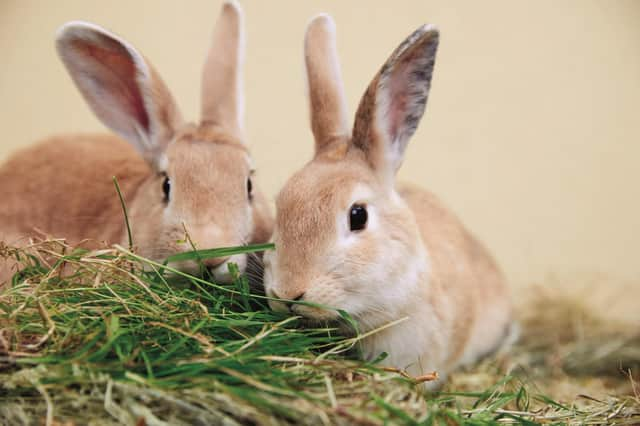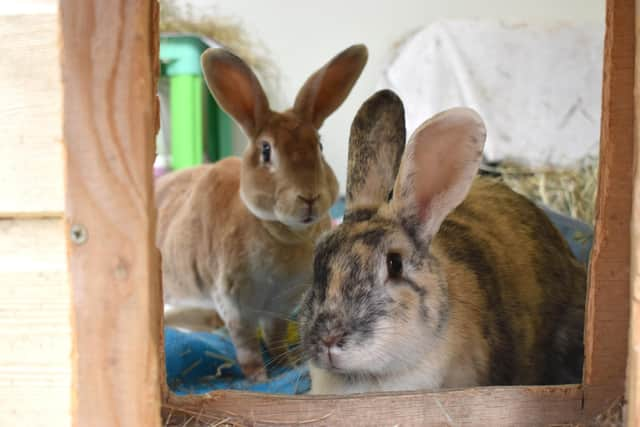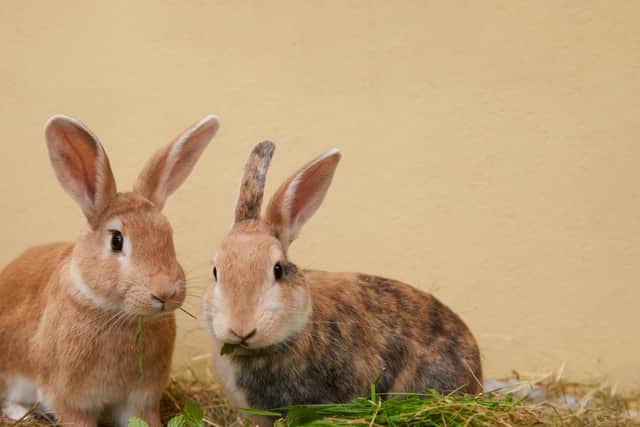How to create the right set-up for rabbits, from an expert


Here at Woodgreen, we’ve been taking in and rehoming rabbits for decades – so we’ve got to know a thing or two about keeping them healthy and happy!
We’re part of the coalition of experts behind Rabbit Awareness Week, the annual rabbit welfare campaign, which is taking place from June 27 to July 1, 2022. Here are some common questions around this year’s theme: creating a great environment for our long-eared friends.
What’s the ideal housing set-up for a rabbit?


Rabbits need enough room to jump, binky (the adorable leap and twist they do when they’re happy), explore their surroundings, stretch up to their full height (or full length when laying down) and forage for food. This means the more space they have, the better.
Rabbits don’t like being picked up and cuddled, so having a large enclosure means you can go and sit with your rabbits and let them hop over on their own terms.
If your rabbits are outdoors, they should have access to a secure, predator-proof enclosure that measures at least 3m x 2m and 1m in height. A hutch or a shed attached to a run works really well.
Rabbits are crepuscular, meaning they’re most active at dawn and dusk, so it’s important to provide 24-hour access to their whole space.


Indoor rabbits need just as much space, for example in a converted bunny-proofed room. It should have natural light and a steady, comfortable temperature, with a baby gate so they can see out. Slippery floors can be dangerous, so lay carpets or rugs to keep your rabbits safe. Be prepared for lots of chewing, droppings and urine stains on flooring!
What should I put inside my rabbits’ enclosure?
Rabbits like to graze, dig, jump, hide and gnaw. To encourage these natural behaviours, provide lots of hay and/or grass around their enclosure, such as a few filled litter trays (as they eat and go to the toilet at the same time). You can also fill litter trays or shallow cardboard boxes with play sand or organic soil and watch your rabbits enjoy digging.
Sturdy items like old furniture or children’s plastic chairs are great for them to jump on – just pop a blanket or towel on the top to provide some grip.
As a prey species, rabbits need lots of places to hide, like open cat carriers and large cardboard boxes with rabbit-sized holes cut into them. Rabbits also have to chew to keep their teeth in good condition, so we recommend safe wood like apple or willow tree branches.
How many rabbits should I keep?
Rabbits are a very social species who live in groups in the wild, which helps them to feel safe. Even in a home environment, they should always live with at least one rabbit companion.
The best pairing is a neutered male and neutered female, although same-sex sibling pairings can work well if they’re neutered early to prevent fighting – ideally between three and six months of age.
If you have a single rabbit and would like to find them a companion, introducing them to other rabbits can be tricky. Just like humans, it can take bunnies a few tries to find their soulmate! At Woodgreen, we have a mixing service to find your rabbit’s perfect match, or we can offer advice on mixing at home.
For trusted advice about all aspects of pet care, visit www.woodgreen.org.uk/pet-advice.
And to find out more about Rabbit Awareness Week, please visit www.rabbitawarenessactiongroup.co.uk to download your free pack.